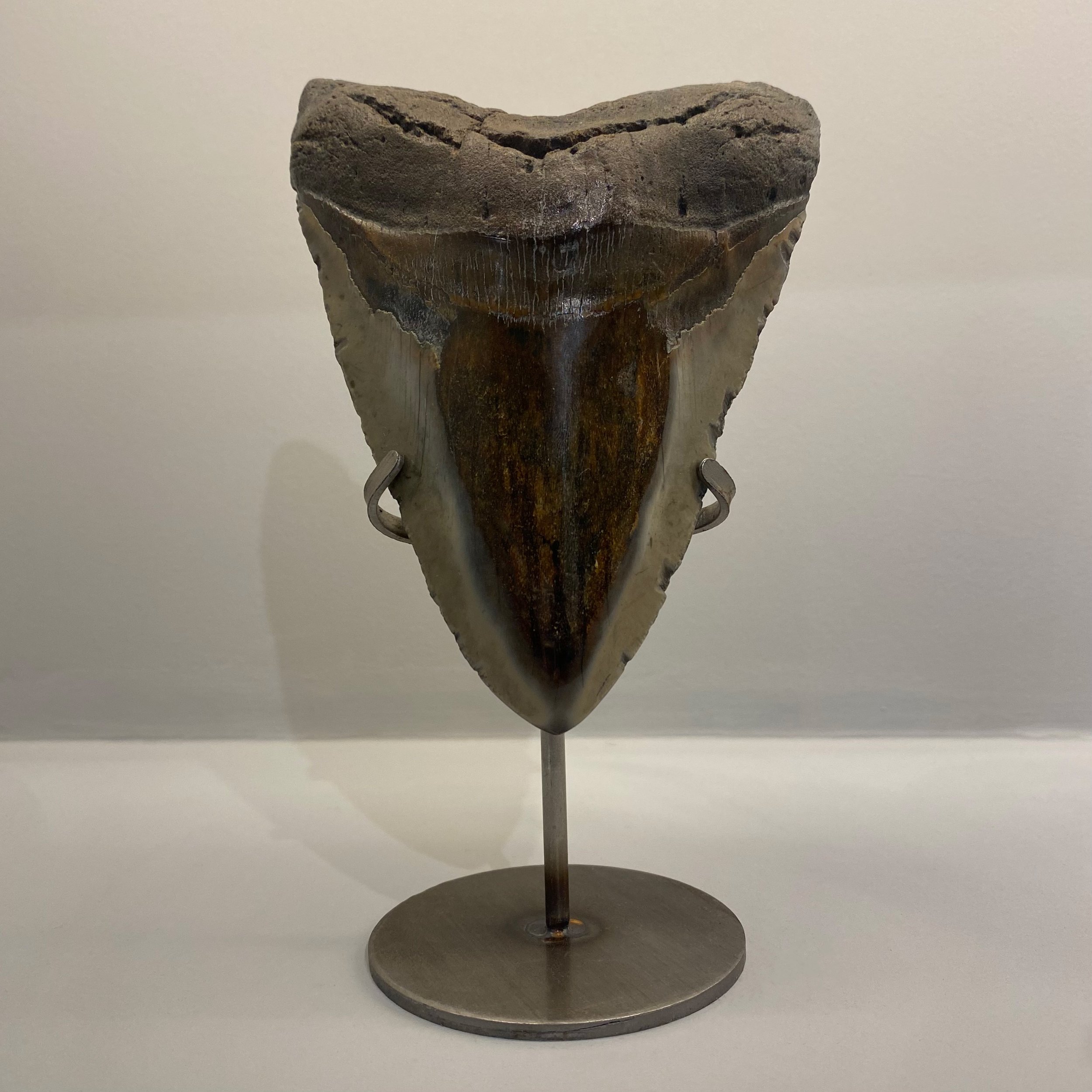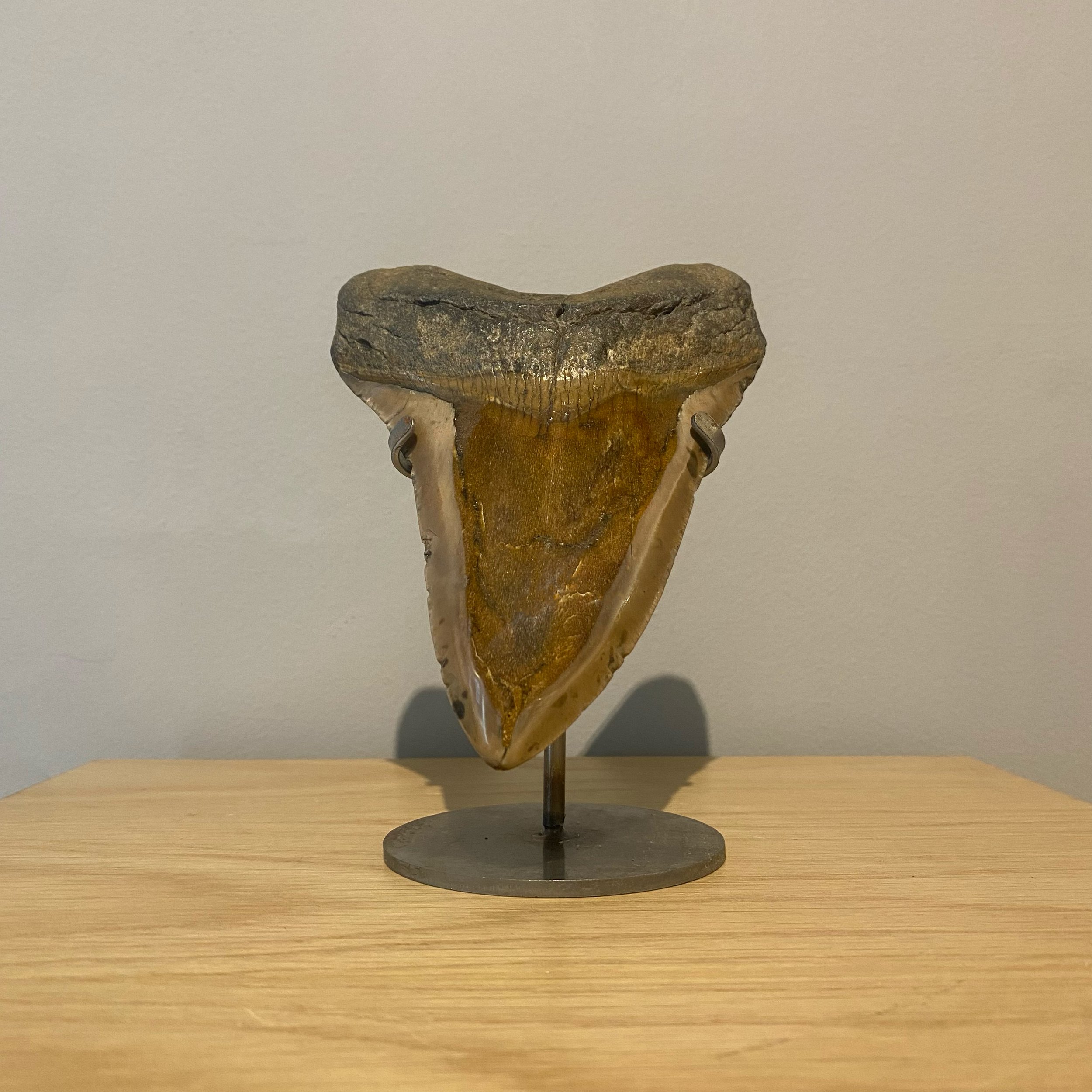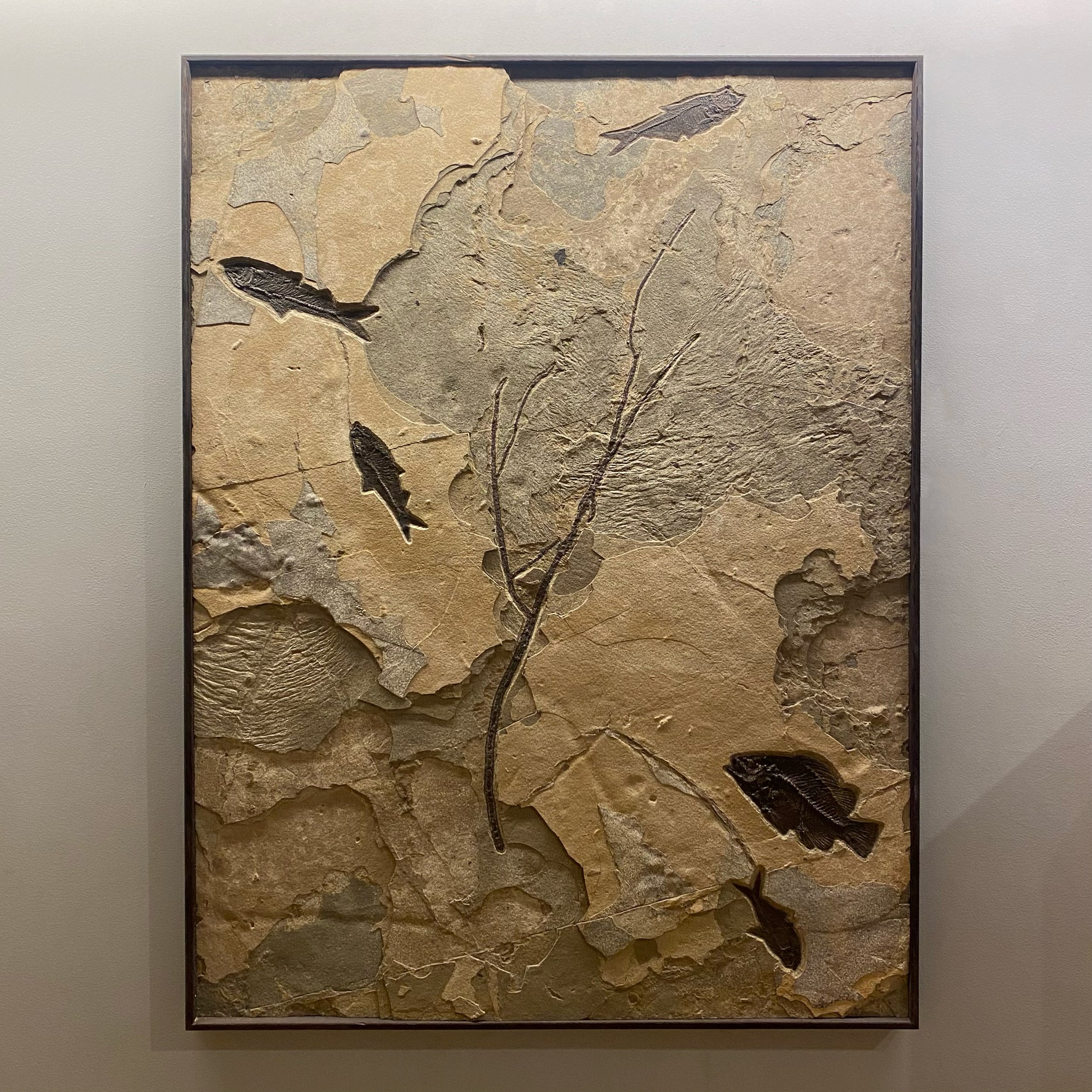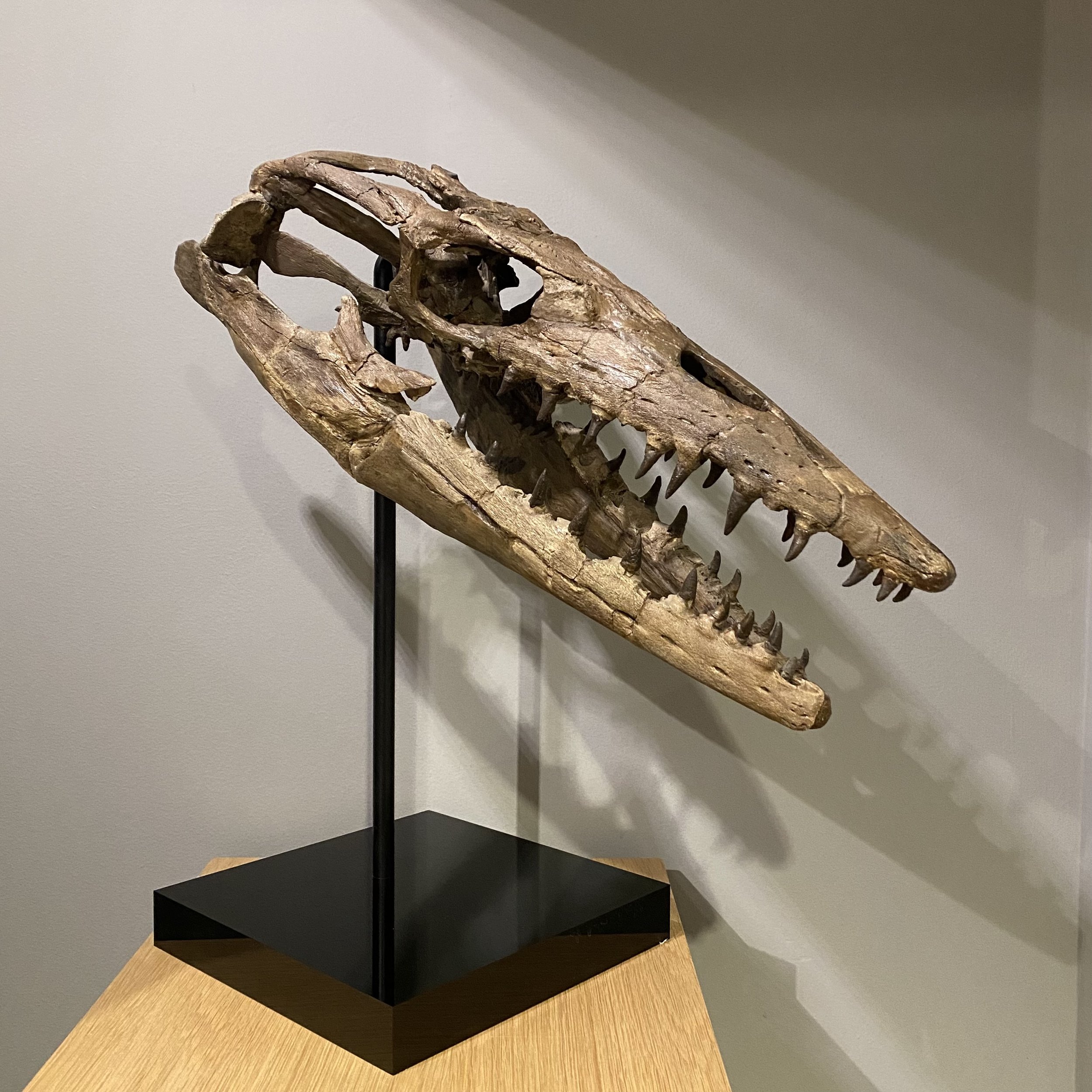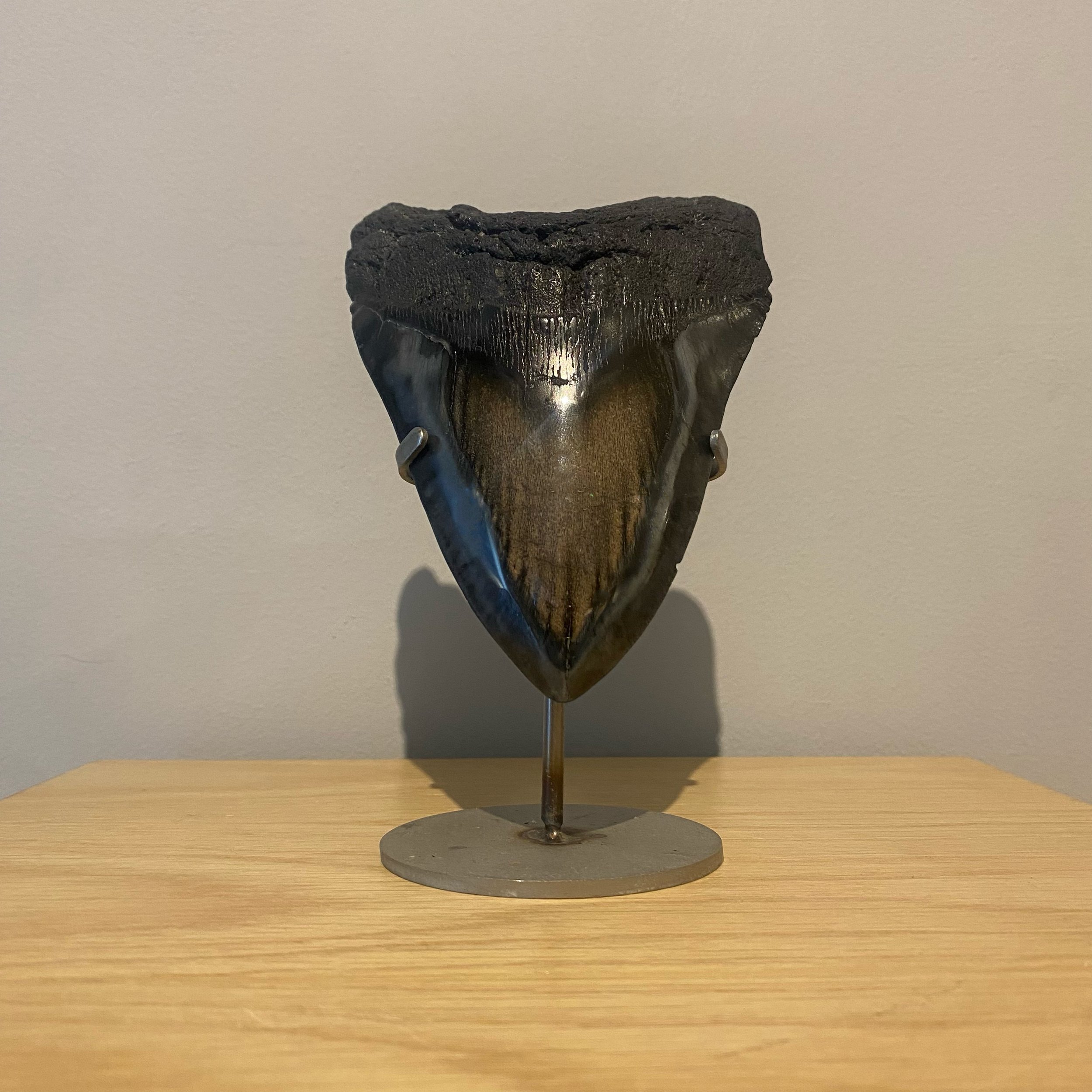Fossilised Megalodon Shark Tooth
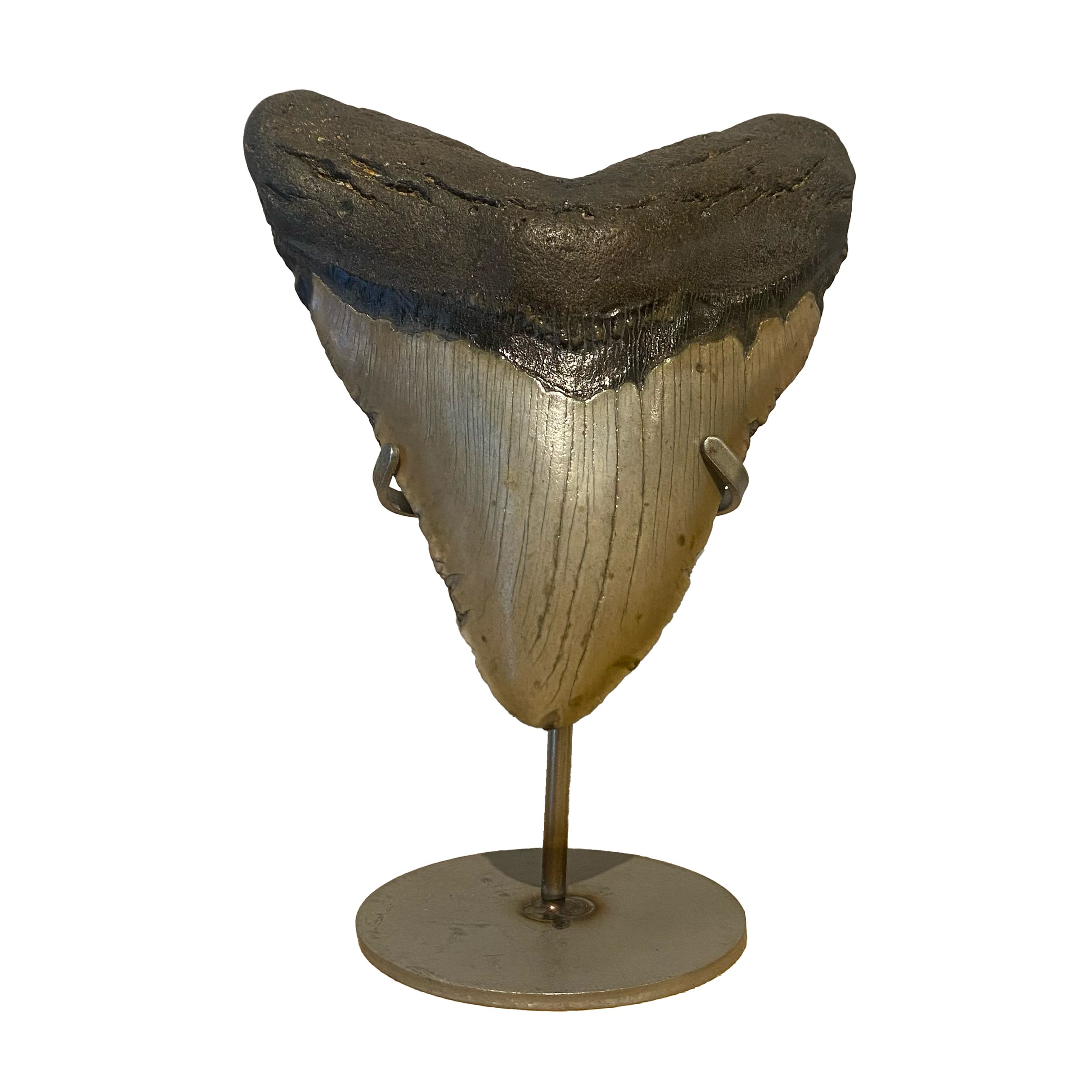



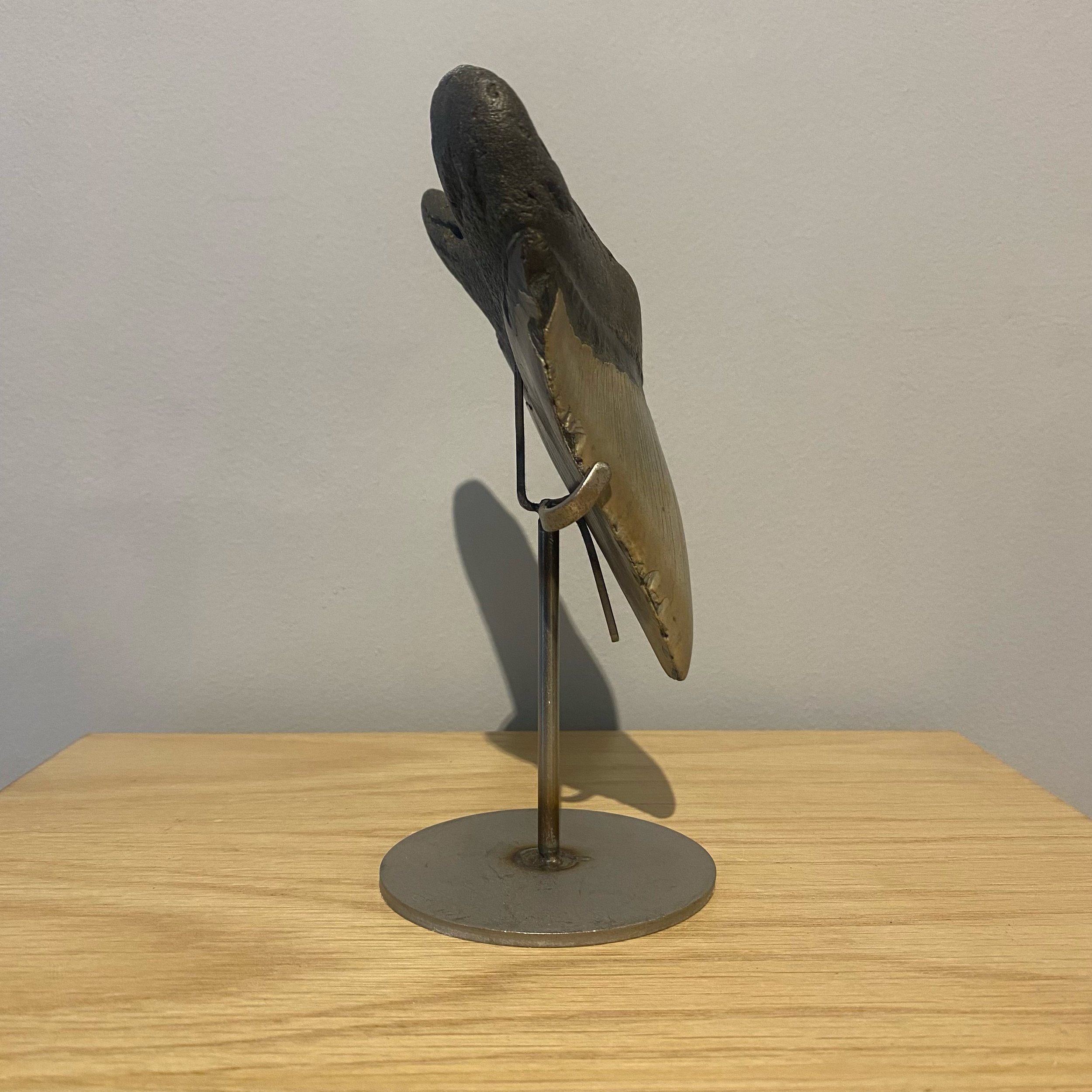

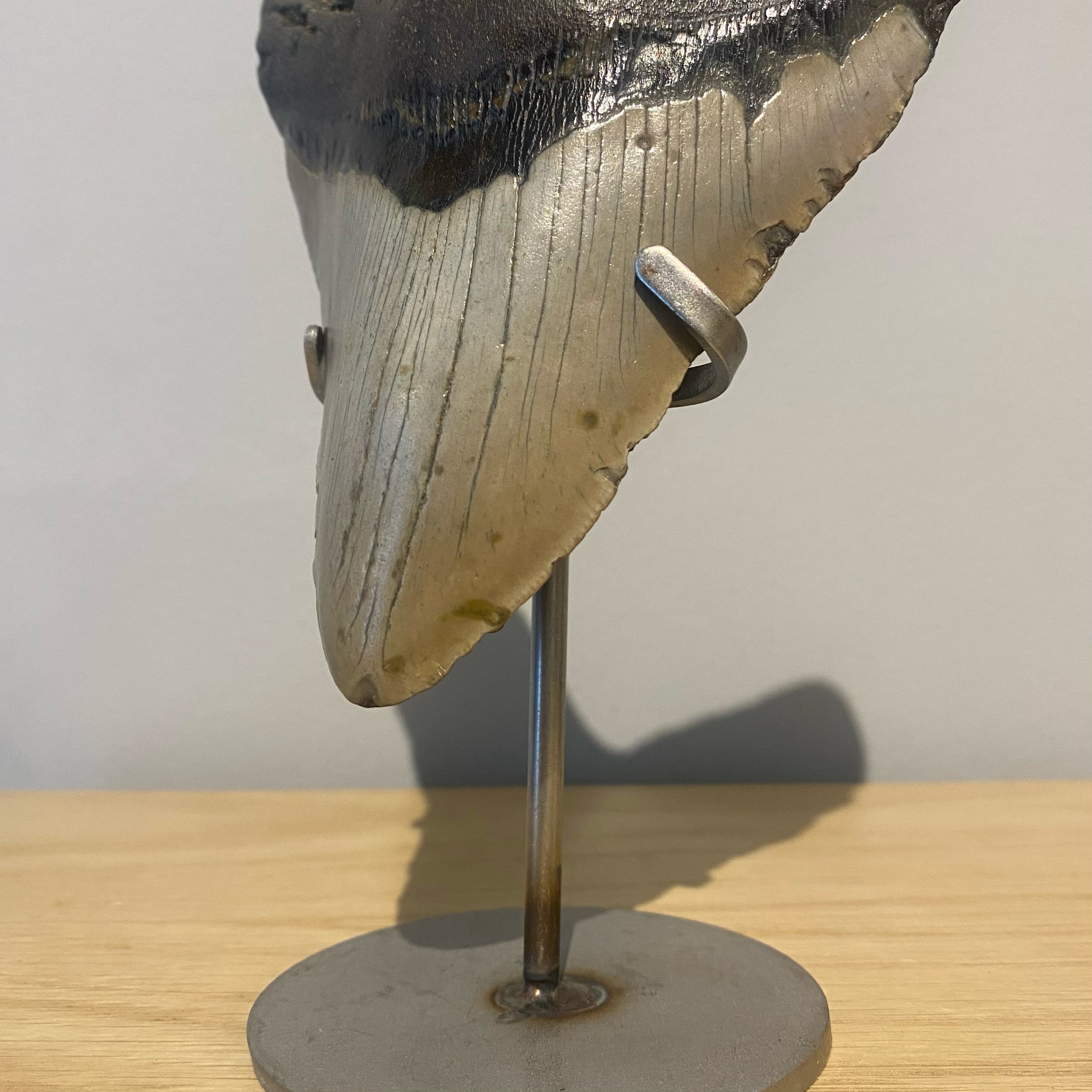
Fossilised Megalodon Shark Tooth
Fossilised Megalodon Shark Tooth
Otodus megalodon
Early Miocene (23 million years ago)
13.5 x 12 x 3.5 cm
North Carolina Coast
£2,500.00
The largest sharks in history, Megalodons were renowned for their gigantic, blade-like teeth which could reach up to 7 inches long and which scientists have described as ‘ultimate cutting tools’. Early Megalodon sported three-pronged teeth which acted like a fork to grasp and tear apart fast-moving fish, but by the later Megalodon shark species they had developed flattened teeth with serrated edges for killing and eating fleshy animals. It is believed that it took 12 million years for the teeth of the early Megalodon to grow into the late ones.
Large marine creatures like seals, dolphins, and whales made up the majority of their food. Bite marks on whale bones are frequently found in fossil evidence, demonstrating the shark's exceptional hunting skills.
The extinction of these animals is widely debated by the scientific community. However, the prevailing theory of their demise is based on climate change. A significant change in global temperatures caused the environment to abruptly cool 2.6 million years ago. The shifting temperature caused Megalodon's prey to perish, and entire species that Megalodon had preyed on went extinct.

